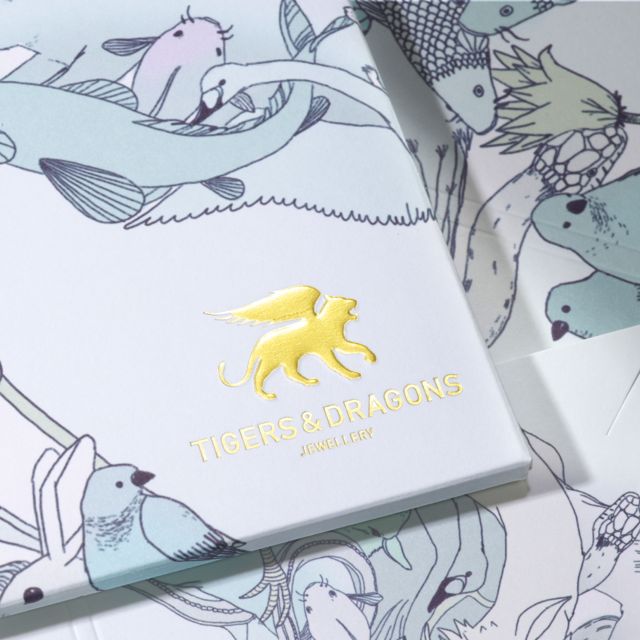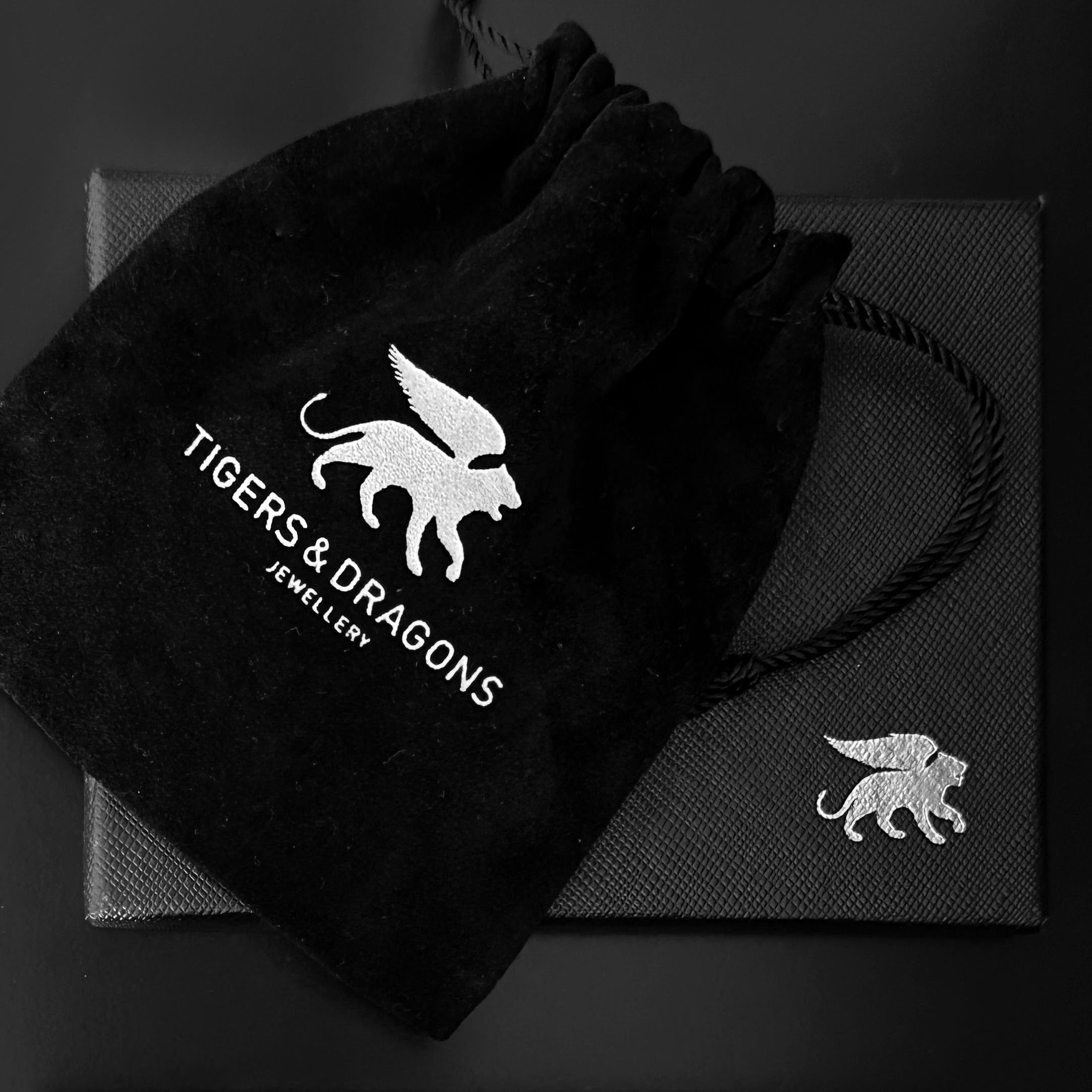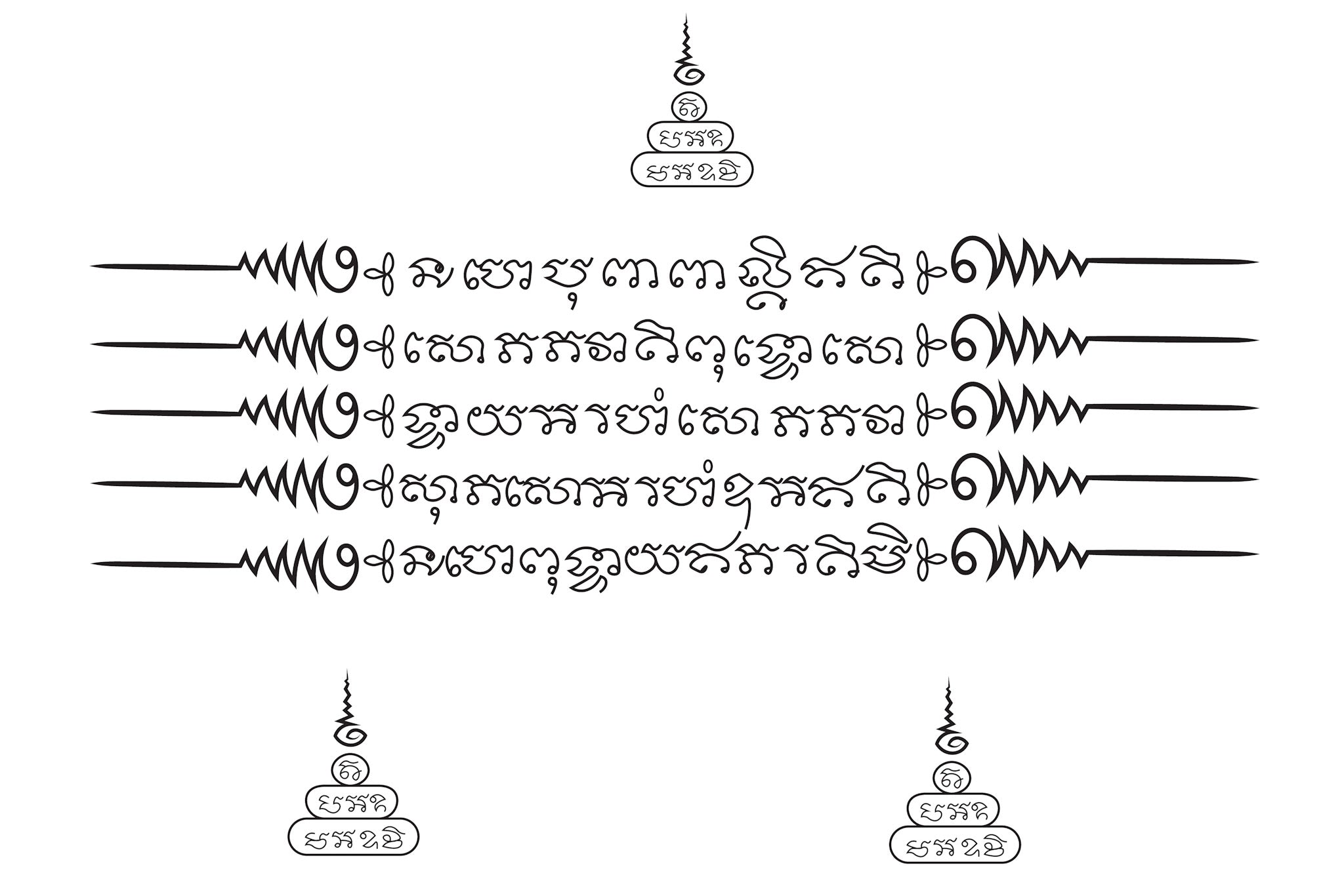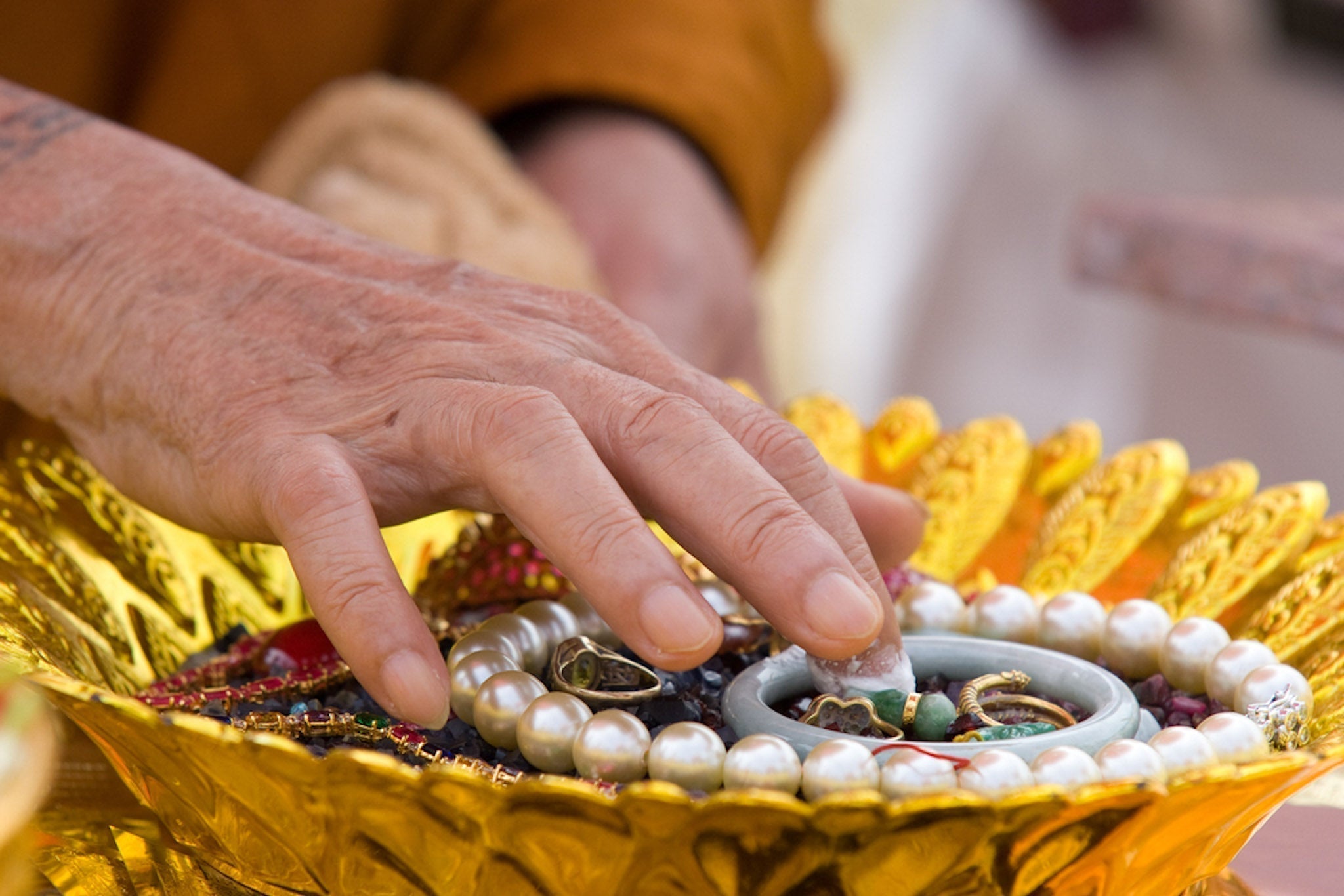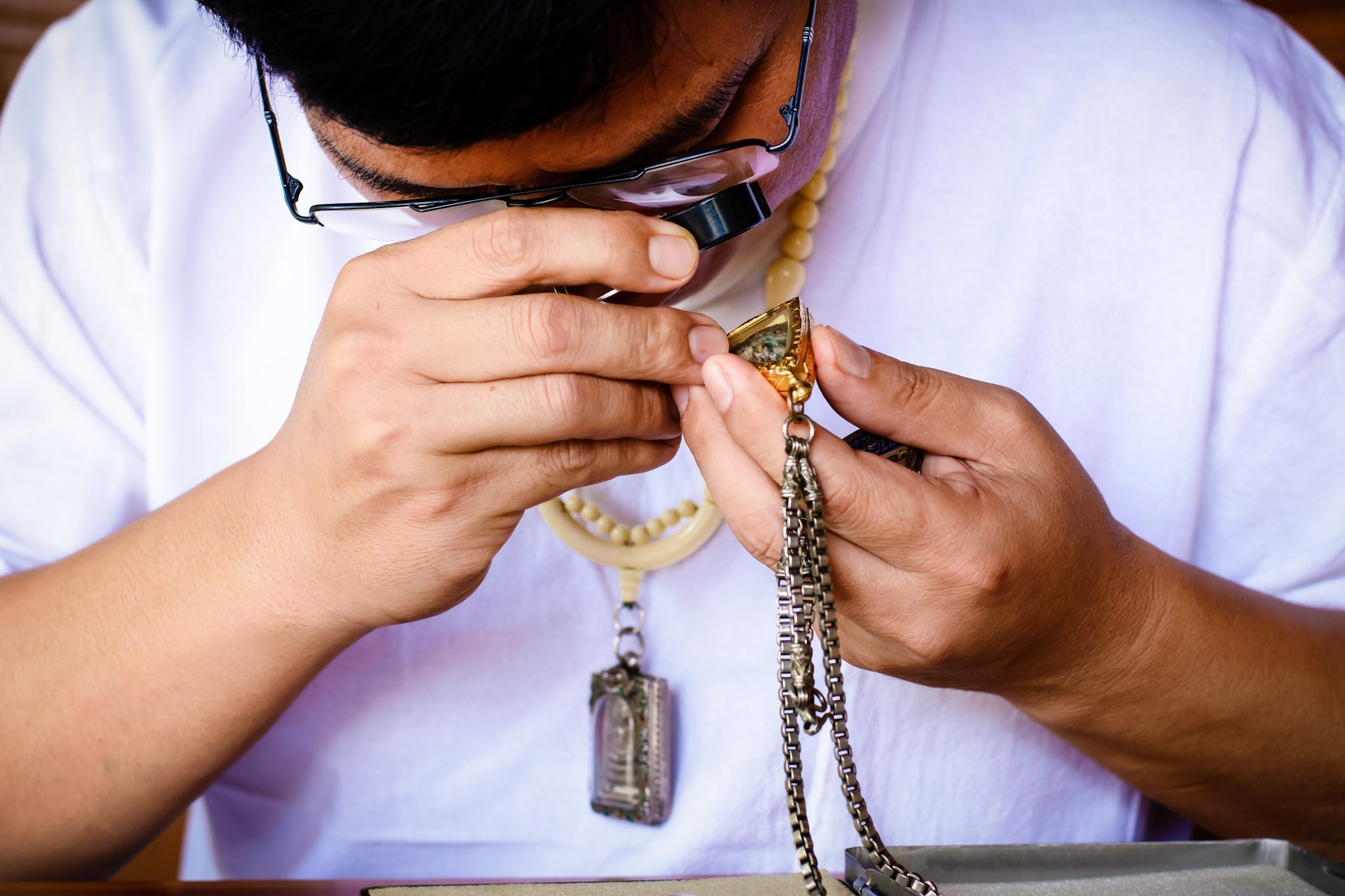
Reading Thai Amulets: A Guide to Iconography and Inscriptions
Introduction to Amulet "Literacy"
The ability to "read" Thai amulets represents a specialized form of cultural literacy that combines knowledge of Buddhist iconography, understanding of sacred languages, and familiarity with traditional symbolic systems. This interpretive skill, traditionally passed down through temple communities and collector networks, enables viewers to decode the rich layers of meaning embedded within these small religious objects.
Thai amulets function as condensed texts, communicating complex theological concepts, historical references, and spiritual intentions through visual and textual elements. Developing proficiency in amulet interpretation requires systematic study of these symbolic languages and their cultural contexts.
Buddhist Iconographic Systems
Buddha Image Poses and Their Meanings
The representation of Buddha figures in Thai amulets follows standardized iconographic conventions developed over centuries of Buddhist art. Each pose (mudra) carries specific doctrinal significance and spiritual associations.
- Bhumisparsha Mudra (Earth-Touching Gesture) The most commonly encountered pose shows the Buddha seated in meditation with his right hand touching the earth. This represents the moment of enlightenment when the Buddha called upon the earth to witness his spiritual achievement. Iconographically, the left hand rests in the lap while the right hand extends downward, fingers pointing toward the earth. This mudra symbolizes steadfastness, truth, and the conquest of temptation.
- Dhyana Mudra (Meditation Pose) Both hands rest in the lap, right hand placed over the left with palms upward and thumbs touching. This represents deep meditative concentration and inner peace. Amulets featuring this mudra are often associated with contemplative practice and mental tranquility.
- Abhaya Mudra (Fearlessness Gesture) The right hand is raised with palm facing outward at shoulder level, while the left hand hangs naturally at the side or rests in the lap. This gesture signifies protection, fearlessness, and divine reassurance. Such amulets are particularly popular among those seeking courage and protection.
- Vitarka Mudra (Teaching Gesture) The right hand is raised with thumb and index finger forming a circle, while the remaining fingers point upward. This represents the transmission of Buddhist teachings and intellectual discourse. Amulets with this mudra are often chosen by students and teachers.
- Varada Mudra (Wish-Granting Gesture) The right hand extends downward with palm facing outward, symbolizing generosity and the granting of wishes. This mudra represents compassion and the fulfillment of devotees' spiritual needs.
Different Thai regions and historical periods have developed distinctive approaches to Buddha imagery. Northern Thai (Lanna) traditions often feature more angular facial features and distinctive crown forms, while central Thai styles tend toward more rounded, serene expressions. Southern Thai influences may incorporate elements from Sri Lankan Buddhist art traditions.
The clothing and ornamental details also vary significantly. Some traditions depict the Buddha in simple monastic robes, while others include elaborate royal regalia reflecting concepts of the Buddha as a spiritual king. Understanding these regional variations helps in identifying the geographical and temporal origins of specific amulets.
Sacred Scripts and Linguistic Elements
Pali Language Inscriptions
Pali, the liturgical language of Theravada Buddhism, appears frequently on Thai amulets in various scripts. Common Pali phrases include:
- "Buddho" - Simply meaning "Buddha," this single word often appears as a meditation formula and expression of devotion.
- "Namo Buddhaya" - "Homage to the Buddha," a fundamental expression of reverence.
- "Samma Sambuddhassa" - "To the Perfectly Enlightened One," often part of longer devotional formulas.
- "Dhammam Saranam Gacchami" - "I take refuge in the Dharma," part of the Triple Gem refuge formula.
- "Sangham Saranam Gacchami" - "I take refuge in the Sangha," completing the Triple Gem invocation.
Khom Script Traditions
Many Thai amulets feature inscriptions in Khom script, an ancient writing system derived from Khmer that was historically used for religious and royal documents in Thailand. Khom script carries particular prestige and is considered especially appropriate for sacred texts.
The angular, geometric forms of Khom characters often incorporate decorative elements that blur the line between text and ornamental design. Understanding basic Khom letter forms enables recognition of common sacred formulas even when the full text cannot be read.
Sanskrit Elements
Sanskrit mantras and sacred formulas appear on amulets intended for specific protective or beneficial purposes. Common examples include:
- "Om Mani Padme Hum" - The famous six-syllable mantra associated with Avalokiteshvara (Guanyin), representing compassion.
- "Gate Gate Paragate Parasamgate Bodhi Svaha" - From the Heart Sutra, representing the journey to enlightenment.
- "Om Ah Hum" - A fundamental tantric formula representing body, speech, and mind.
Yantra and Sacred Geometry
Understanding Yantra Designs
Yantras represent one of the most complex symbolic systems found on Thai amulets. These geometric designs function as visual mantras, encoding spiritual concepts through mathematical and artistic arrangements.
- Sak Yant Traditions Traditional Thai yantra designs (sak yant) incorporate various geometric forms with specific meanings. Triangular designs often represent the Triple Gem (Buddha, Dharma, Sangha), while circular patterns may symbolize completeness and cosmic unity. Square formations frequently relate to the four cardinal directions and elemental balance.
- Numerical Symbolism The number of elements within yantra designs carries significance. Five-pointed designs relate to the five precepts or five elements, while eight-fold patterns reference the Noble Eightfold Path. Nine-element yantras often represent completeness and cosmic totality.
- Sacred Animal and Mythological Figures
Thai amulets frequently incorporate animal symbolism drawn from Buddhist, Hindu, and local mythological traditions.
- Naga (Serpent) Imagery Nagas represent water spirits and guardians of Buddhist teachings. They often appear coiled around Buddha figures or as independent protective symbols. The seven-headed naga specifically relates to the story of the naga king who protected the Buddha during meditation.
- Garuda Symbolism The Garuda, a mythical bird-human hybrid, serves as a symbol of royal power and spiritual transcendence. On amulets, Garuda imagery often indicates protection from harm and spiritual elevation.
- Lion and Elephant Motifs Lions (singha) represent courage and the power of the Buddha's teachings, while elephants symbolize wisdom, strength, and royal authority. White elephant imagery particularly connects to Thai concepts of royal legitimacy and spiritual purity.
Monastic Portraiture and Historical References
Identifying Prominent Monks
Amulets featuring specific monks require knowledge of their iconographic conventions. Somdej Toh, for example, is typically depicted with specific facial features, robing styles, and often includes identifying inscriptions. Luang Pu Man appears with characteristic facial hair and meditation postures.
The accuracy of these portraits varies, with some following strict traditional conventions while others incorporate more individualistic artistic interpretations. Understanding the historical context and traditional descriptions of these figures aids in proper identification.
Temporal and Regional Markers
Certain iconographic elements serve as markers for specific time periods or regional traditions. Changes in artistic style, script usage, and symbolic emphasis can help date amulets and identify their places of origin.
Symbolic Color Systems
When present, colors in Thai amulets carry specific symbolic associations. Gold represents purity and enlightenment, while silver symbolizes clarity and wisdom. Red indicates power and protection, blue represents tranquility and meditation, and white signifies purity and peace.
Understanding these color associations helps interpret the intended spiritual emphasis of particular amulets, though it should be noted that many traditional amulets rely primarily on form and text rather than color symbolism.
Practical Application and Interpretation
Systematic Approach to Reading
Developing proficiency in amulet interpretation requires systematic observation and analysis. Begin by identifying the central figure or symbol, then examine surrounding textual elements, decorative details, and overall composition. Consider the material, size, and apparent age of the piece as contextual information.
Cultural Sensitivity and Limitations
It's important to recognize that amulet interpretation involves cultural knowledge that extends beyond visual analysis. Many symbolic meanings depend on specific cultural contexts, historical events, and religious teachings that may not be immediately apparent to outside observers.
Continuing Education
Amulet literacy represents a lifelong learning process, as new discoveries, scholarly research, and cultural developments continue to expand understanding of these complex symbolic systems. Engaging with scholarly literature, museum collections, and knowledgeable practitioners provides ongoing opportunities for deepening interpretive skills.
Conclusion
Reading Thai amulets requires integration of multiple knowledge systems including Buddhist iconography, sacred languages, historical awareness, and cultural understanding. While complete mastery of these interpretive skills takes years of study, developing basic literacy in amulet symbolism provides valuable insights into Thai Buddhist culture and the sophisticated ways communities encode spiritual meaning in material objects.
This symbolic literacy also reveals the remarkable continuity of traditional knowledge systems and their ongoing relevance in contemporary Thai society, where these ancient symbolic languages continue to communicate spiritual concepts and cultural values across generations.






